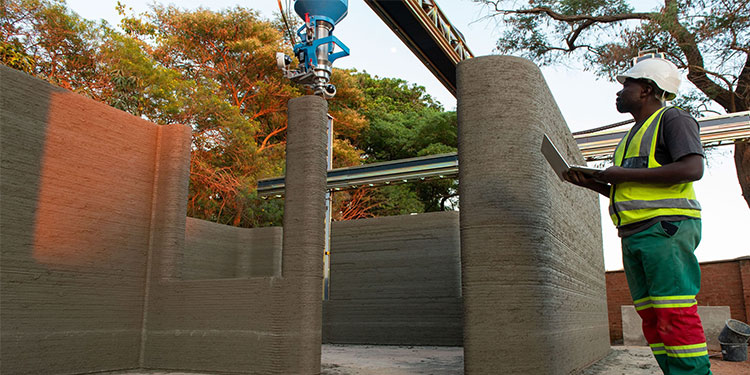
With its high speed of construction and optimised material usage, this technology lowers the carbon footprint for constructing new homes by up to 70%.
Pioneering this technology in schools for the first time, 14Trees seeks to address the country’s lack of proper infrastructure while generating professional local jobs.
Using patented LafargeHolcim ink, the 3D printing process will drastically reduce the time and costs of building housing and schools in Malawi. UNICEF reports that there is currently a shortage of 36,000 classrooms in Malawi, which would take 70 years to construct using traditional methods.
According to 14Trees, this infrastructure gap could be bridged by 3D printing in just 10 years. In collaboration with a number of non-governmental organisations, 14Trees is working to resolve chronic shortages on a scale, beginning with the families and communities most in need.
In Malawi, the project centred on local 14Trees teams trained by 3D printing experts, LafargeHolcim and COBOD. The teams included architects, 3D machine operators, civil and structural engineers and material specialists. The project also included almost 40 people in the preparation of 3D ink and in the production of building trades such as carpenters, painters and roofers.
The walls of the first prototype house at 14Trees were constructed in 12 hours at Lilongwe, compared to the traditional methods nearly four days. In 18 hours, instead of several days, the walls of its first school, founded in Salima, were printed.
Region head Middle East Africa and LafargeHolcim executive committee member, Miljan Gutovic said, “Beginning in Malawi, the projects in Kenya and Zimbabwe will deploy this technology across the wider region.”
